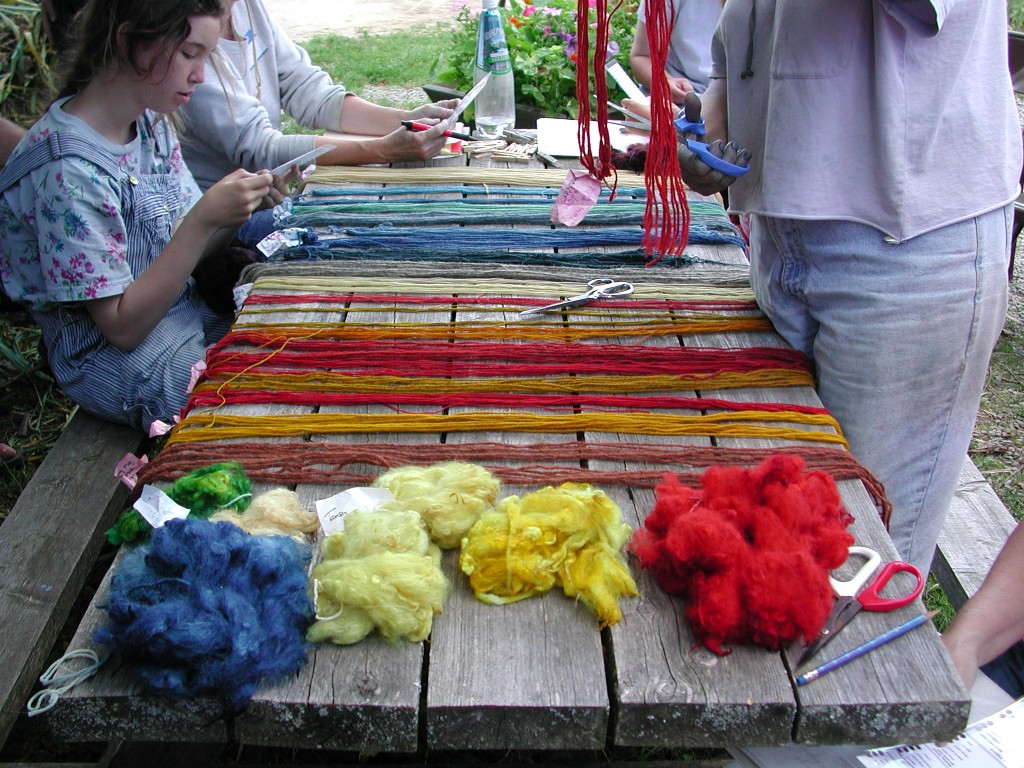Since I am a dyer, I love to grow plants right in my garden to dye wool, silk, and linen. The most common besides indigo blue are weld, tansy, and goldenrod for yellow, and madder and bedstraw for red. The fiber must first be mordanted which means that you simmer the fiber in something that will allow it to absorb color. I use alum, rhubarb leaves, or tree barks. The fiber is then simmered in pots with dye plants and water until the color is deep enough. Below is a list of dye plants you can grow in your garden.
Yellows – calendula, goldenrod, marigold, onion skins, queen Ann’s lace, tansy, weld
Oranges – giant coreopsis, tansy shoots
Greens – artichokes, carrot leaves, lily-of-the-valley, plantain
Browns – coffee, comfrey, larch needles, black walnut, wild plum root
Gray/Black – alder bark, iris roots, sumac leaves, poplar
Blue/Purple – cornflowers, indigo
Reds – alder, lady’s bedstraw, spruce cones, madder
Pink – amaranth, birch bark, sorrel root
Tints – these are NOT fast – blueberries, elderberries, grapes, red cabbage
Mordants – sumac, rhubarb, juniper, dock root, galls, alum and cream of tartar, tree barks

